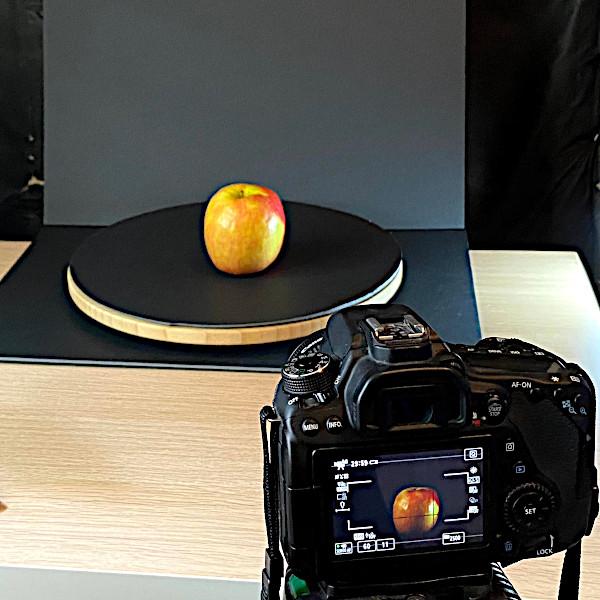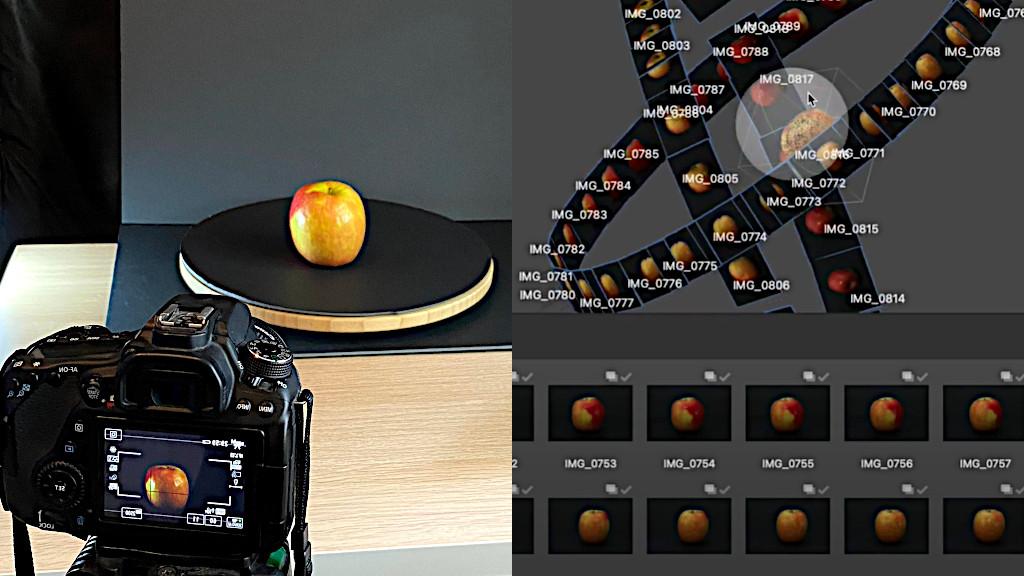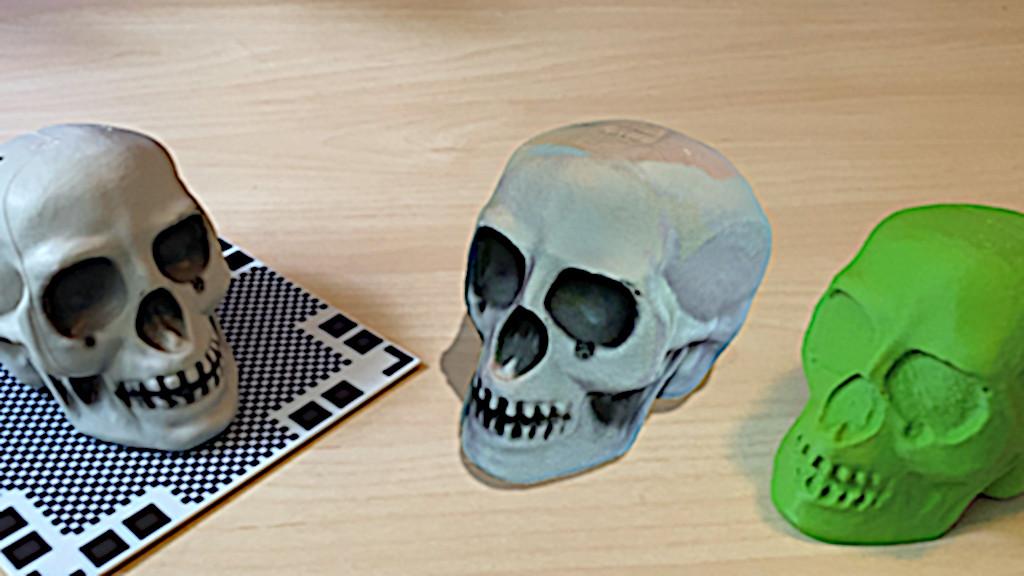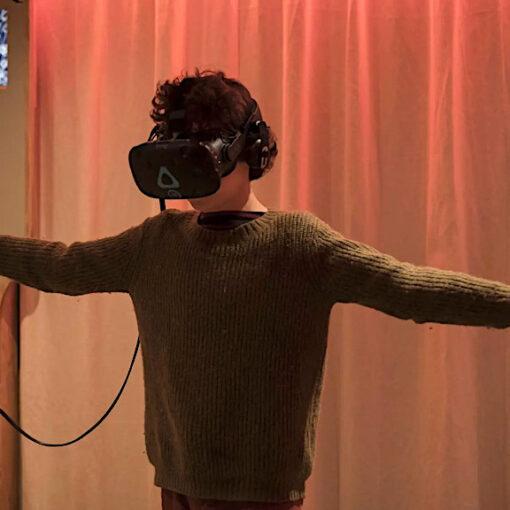Metashape is a powerful photogrammetry program that can create detailed 3D models with color textures from photographs. Using a turntable is a cost-effective way to get detailed scans of small objects using only a DSLR camera. In this article, I’ll show you how I created a 3D model of an apple using Metashape and a prepared turntable. I also created an accompanying video that covers the process in greater detail if you are interested in how to replicate my results. You can also visualize the textured model on Sketchfab and download or examine it yourself.
Turntable for Photogrammetry – Creating a Void
I was inspired by Erik Christensen’s video ‘Scanning into the Void’, which covers many of the basic fundamentals of creating a turntable photogrammetry setup. As an amateur photographer, I wanted to try and recreate as much of the effect as I could while using the equipment I already had. I used a wooden turntable for my base and cut a piece of black foamcore to fit as a cover. I placed the turntable onto a piece of black foamcore as a bottom surface, and another piece as a background. You can see the result of this setup in the screen of the camera; the apple is brightly lit and stands out from the background.

(Photo: Andrew Sink)
- Buy Rotating Turntable on Amazon (affiliate link)
Lighting – Avoid the Shine and Reflection
For taking the photos, an automated turntable will give the most consistent rotations and evenly lit photos. Because I’m using a manual turntable, I tried to get the rotation as even as possible by hand. The gif above shows the complete dataset for the first angle; another dataset was captured with the apple on its side.
Because I didn’t have a proper ring light, you’ll notice that the apple is slightly darker towards the bottom and has visible reflections from the light sources, which are also present in the completed mesh. This dataset could be improved with better lighting, but it did work for this application.
Creating the Model in Agisoft Metashape
Creating a model in Metashape is a relatively straightforward process, with a four-part guided workflow bringing you from pictures to a 3D model. The first step is aligning the pictures, which creates a sparse point cloud to begin forming the model. Next, a dense cloud and mesh are created to give the model solid geometry. The final step of the process is to create a texture for the model which is created from the photos.
This part of the process requires the most time and the more accurate the sparse cloud and mesh, the more accurate the final model will be. Because we have a completely featureless background, we can easily create a mask to help make a more accurate final model. Metashape offers excellent tutorials that cover this process in detail; I highly recommend checking them out if you are interested in learning more about creating masks and other advanced techniques.
Exporting the Model and Final Steps
Once the alignment and mesh workflow is completed, you can export the textured mesh by creating an .OBJ, an .MTL, and a .PNG file. These files will allow you to bring the model to the next step, which is completely up to you! The model can be 3D printed using the mesh file, or used as a digital asset in an AR/VR environment. You can also upload the model to Sketchfab and send it to others for them to view in their web browser.
Click and rotate the model in Sketchfab preview.
Of course, you can always use Metashape software without a turntable to capture objects like trees and make your own creative projects.
Read More: Photogrammetry – with a Mobile Phone Camera
One of the convenient ways to 3D scan objects or the scenery is by taking pictures from all angles using a mobile phone camera, what’s known as photogrammetry or a photoscan. The images are then uploaded into a photogrammetry software for processing. After a clean-up, hopefully a quick one, the end result will be a 3D printable object. Read more …
Professional 360 Degree Photography Turntable on Amazon (affiliate link)
Read More: Revopoint POP – Affordable 3D Scanner With Good Resolution
Revopoint has taken advantage of the growing trend and released their sub-$700 POP 3D scanner targeted squarely at the consumer market. The Pop is capable of creating detailed mesh scans using structured light at a fraction of the price of comparable scanners. Read more …

(Photo: Andrew Sink)







